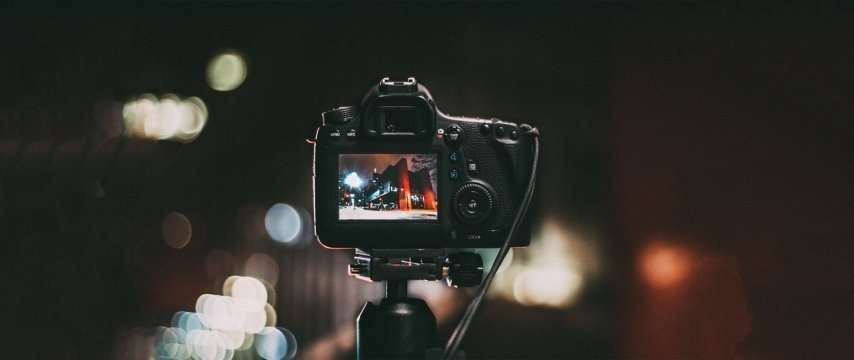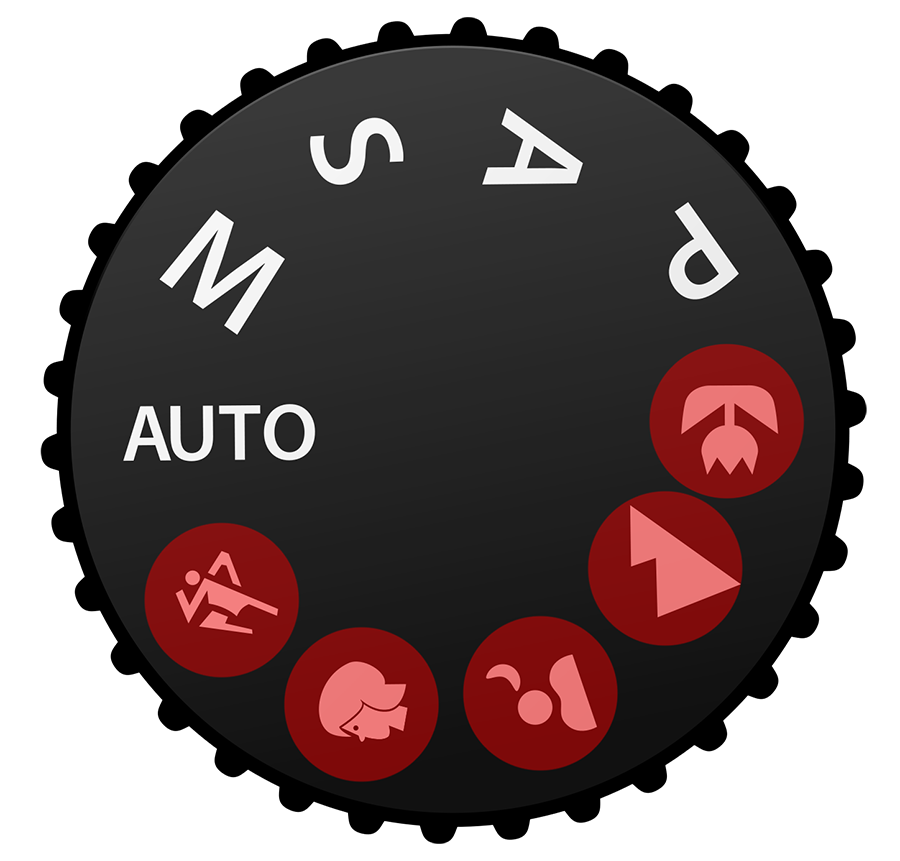Photo basics #3: Camera's shooting modes

Did you ever wonder how to use this all icons and letters on your camera? In the last part of our photo basics course, we learned about ISO, shutter speed and aperture. Now it's time to apply these settings on your camera.

Icon modes
This are automatic camera settings for specific situations. Let's start by describing them:
- Sports mode - this is used for sports photography.
- Portrait mode - this is used for a portrait photography.
- Night mode - you can use it to photograph at night.
- Landscape photography mode - to photography landscapes.
- Marco mode - this can be used for a macro photography (close-ups).
If you just started to using your camera, you will probably think that these modes should be enough and there is no need to learn how more advanced modes work. That's unfortunately wrong thinking.
Imagine a situation when you have to photo the group of people, for example on the wedding or another party. You shoot people, so you set the portrait mode. But this mode will set the aperture to very low because it thinks you want shallow depth-of-field, but you don't.
This can be set by using other modes and we call them the creative modes. That are Program, Aperture Priority, Shutter Priority, and Manual Mode and they all in mostly cameras signed by P, A, S and M letters. Let's learn them now.

Aperture Priority Mode (A or AV)
This is the mode that is probably the best to start if you learn photography because it's simple to use and you are still able to make a lot of creative choices.
When you shoot photos on the aperture priority mode, you are able to set your ISO and aperture. The camera is setting the shutter speed for you to make your picture properly exposed.
The main thing you need to learn shooting in aperture priority mode is to control the depth-of-field. If you will set high aperture (f-stop), you will get a full depth-of-field. By setting aperture low, you will make it shallow. If you will learn how to use the aperture control, you photos will dramatically improve.

Shutter priority mode (S or TV)
In this mode, you can set your ISO and shutter speed and the camera will set the aperture automatically.
The shutter priority mode may seem to be a useful mode, but in fact (and my opinion) it's not. People say that it is a good mode for a sports photography, but the problem is that you cannot set the depth-of-field so you won't have a control how the picture will look.
And when you cannot control how your photography will look, for me the shutter priority mode is useless. Of course, try shooting in this mode on your own and decide for yourself.
Manual mode (M)
When people launch manual mode for the first time I often see they are terrified. When you start using it, it seems to be hard, but after you will get some experience you will see that it's much easier than it seems.
Manual mode, of course, lets you set all three camera settings: shutter speed, ISO, and aperture. I use this mode in almost every situation I don't need to hurry, like with architecture or landscape photography.
Program mode (P)
The program mode sets the aperture and the shutter speed for you and leaves you only ISO.
I never use this mode because when you don't control shutter speed your photo can be blurry, and when you cannot control aperture (f-stop) you have no idea how your photo will look like because it sets the depth-of-field.
Conclusion
You finished third part of my photography tutorial and this time you learned about the camera's shooting modes.
I know at the start it may seem hard to use non-automatic modes but after some time and when you gain some experience you will see it's getting easier and easier. Try to shoot as much as you can with your own ISO, shutter speed, and aperture and you will learn how to use it faster.
-
Guest18th September 2017, 19:58
Whats Taking place im new to this, I stumbled upon this I have found It positively helpful and it has aided me out loads. I hope to contribute & aid different users like its aided me. Good job.
-
broderie21th September 2017, 21:02
Hi there to every body, its my first go to see of this blog; this blog consists of remarkable and truly excellent stuff for visitors.
-
Mikey the Photographer13th November 2017, 15:40
Good tutorial, hope you will write another article soon! Ive learned here a lot about camera shooting modes and other photography basics tips.
-
Dannie9th March 2018, 22:19
Hi there! This blog post couldnt be written any better! Reading through this article reminds me of my previous roommate! He constantly kept preaching about this. Ill send this post to him. Fairly certain hell have a good read. Thanks for sharing!
-
Hellen Kiefer8th May 2018, 18:29
Somebody essentially help to make severely posts I might state. This is the very first time I frequented your website page and to this point? I surprised with the research you made to create this particular post incredible. Excellent job!
-
Coy15th June 2018, 06:44
Please let me know if youre looking for a author for your site. You have some really good posts and I think I would be a good asset. If you ever want to take some of the load off, Id love to write some content for your blog in exchange for a link back to mine. Please shoot me an e-mail if interested. Many thanks!
-
Vulcu Radu17th July 2018, 22:51
Great tips, it helped me a lot to learn the basics :)
-
Grzegorz Pytel4th June 2019, 23:09
This text was translated automatically. Original text is below: Propsy za dzielenie się więdzę ;)
-
Charli Smith26th February 2020, 08:36
They will probably start you on developing black and white photographs. Mainly because of costs because it takes less chemicals and less time to develop.






I'm learning photography basics from your course, and now its time to try this all modes you described. Wish me luck!